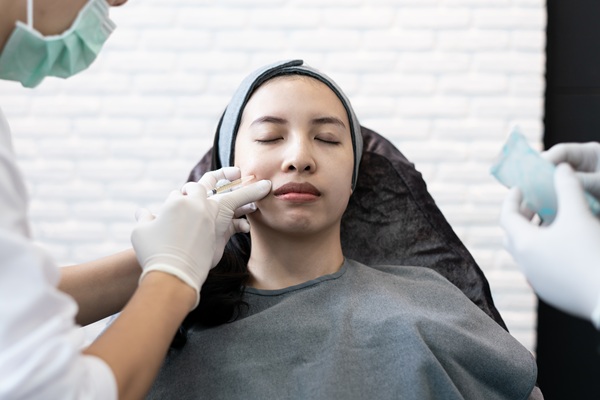Understanding Facial Reanimation: Techniques and Benefits

Facial reanimation is a specialized surgical approach designed to restore movement and expression in individuals affected by facial paralysis. This condition may result from trauma, nerve injury, tumor removal, or conditions such as Bell’s palsy. Facial reanimation combines microsurgical techniques, nerve grafting, and muscle transfers to improve function and appearance. When performed by a skilled neurosurgeon, facial reanimation offers renewed control and symmetry for those who have lost the ability to express emotions naturally.
Causes and impact of facial paralysis
Facial paralysis can significantly affect a person’s ability to speak, blink, smile, or convey emotions. It may involve one or both sides of the face and can be temporary or permanent. The most common causes include facial nerve damage during surgery, stroke, or long-standing inflammation. In more complex cases, facial reanimation becomes the best option to restore facial dynamics and quality of life.
The emotional and psychological effects of facial paralysis are also substantial. Restoring facial movement can improve communication, confidence, and social interaction.
Facial reanimation techniques
Facial reanimation procedures vary depending on the severity, cause, and duration of paralysis. Some of the most common techniques include:
- Nerve grafting or transfers: Surgeons may use nerves from other parts of the body, such as the sural or hypoglossal nerve, to reconnect or replace the damaged facial nerve. This allows for the return of voluntary muscle control.
- Muscle transfers: In cases where facial muscles have atrophied, muscles such as the gracilis (from the thigh) may be transplanted to the face. Once connected to a healthy nerve source, these muscles help recreate movement and symmetry.
- Static procedures: For individuals not suited for dynamic reanimation, static techniques may involve fascia slings or lifting procedures to improve facial positioning and symmetry at rest.
Advanced imaging and intraoperative monitoring assist neurosurgeons in targeting the best reconstruction strategy while preserving nearby structures and function.
Benefits of facial reanimation
Facial reanimation provides both functional and aesthetic benefits. Some of the most notable advantages include:
- Restored ability to smile, blink, and speak clearly
- Improved facial symmetry and muscular tone
- Protection of the eye from dryness and exposure damage
- Enhanced emotional expression and communication
- Increased self-esteem and social engagement
Successful outcomes depend on the timing of intervention, overall nerve and muscle health, and adherence to post-operative rehabilitation protocols.
Post-surgical care and outcomes
Recovery from facial reanimation involves careful monitoring, physical therapy, and follow-up visits. Rehabilitation helps patients retrain muscles, coordinate movements, and regain strength. Improvements are typically seen over several months as nerve and muscle connections mature.
Patients often regain significant facial function with early diagnosis and a tailored surgical plan. Continued advancements in neurosurgical techniques continue to improve outcomes and reduce recovery time.
A path toward restored expression
Facial reanimation offers hope for individuals facing the physical and emotional challenges of facial paralysis. By restoring movement and symmetry, neurosurgeons help patients return to a more expressive and fulfilling life through personalized, expert care. For more information or to schedule a consultation, call Randall Porter, M.D. at (602) 603-8951.
To schedule a consultation, request an appointment on our website at https://arizonaneurosurgeon.com or call Randall Porter, M.D. at (602) 603-8951 for an appointment in our Phoenix office.
Check out what others are saying about our services on Yelp: Facial Reanimation in Phoenix, AZ.
Recent Posts
A herniated lumbar disc occurs when the soft center of a spinal disc pushes through a tear in the outer ring, often irritating nearby nerves. Early attention helps reduce pain and protect nerve function. Patients may experience sharp low back pain, radiating leg pain (sciatica), numbness, or weakness. A neurosurgeon evaluates symptoms, reviews imaging studies,…
Meningioma is a type of tumor that develops from the membranes covering the brain and spinal cord. While many meningiomas grow slowly and may not cause noticeable symptoms, some tumors can lead to significant health concerns. When you can recognize the signs early, you can get the treatment you need from a neurosurgeon, giving you…
Radiosurgery or stereotactic radiosurgery is a technique used to deliver high doses of radiation to targets within the brain. Radiosurgery, despite its name, is not a surgical procedure. Instead, the name comes from its precision. Radiosurgery can treat benign brain tumors, small brain metastases, arteriovenous malformations, and trigeminal neuralgia.Unlike surgical interventions, radiosurgery is non-invasive. Side…
Gamma Knife is a non-invasive surgical procedure that uses targeted radiation to treat brain tumors, arteriovenous malformations, and other neurological conditions. Unlike traditional surgery, the Gamma Knife does not require incisions, making it an ideal option for patients seeking effective treatment with minimal recovery time. Here are answers to some of the most frequently asked…


